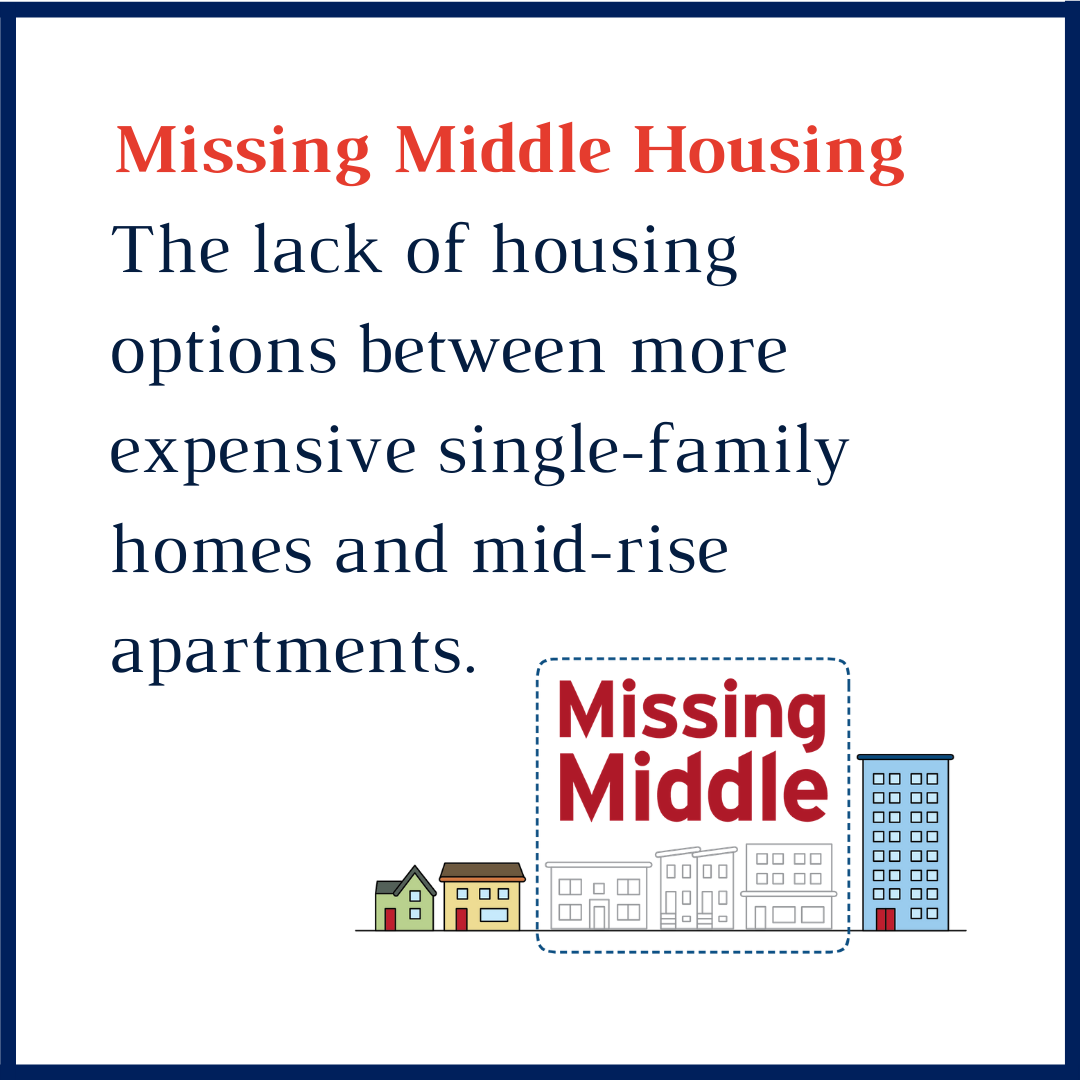What is Affordable Housing?
In the broadest sense, housing is considered “affordable” if a person pays less than 30% of their income toward housing costs.
Most of the time, however, when people refer to affordable housing they are referring to homes and apartments that are affordable to low- and moderate-income households.
Types of Affordable Housing
Market Affordable Housing (MARKS)
“Market-rate affordable” refers to privately owned units that have rents that are affordable to households making up to 80 percent of Area Median Income (AMI). Owners are not required to keep rents at that level, so affordability fluctuates with the market. These are also sometimes referred to as Naturally Occurring Affordable Housing (NOAH).
These units are often described by their affordability level—for example, “80 percent MARKS” refers to units that a household earning 61-80 percent of AMI while a “60 percent MARKS” refers to units a household earning 60 percent of AMI or less could afford.
Committed Affordable Units (CAFs)
“Committed affordable” means the unit has income-restricted rents for an extended period of time, typically 30-75 years, and are generally available for households earning at or below 60 percent of Area Median Income (AMI)—$75,600 for a family of four in Arlington as of May 2021.
In Arlington, CAFs are most often developed by nonprofits with financial assistance from the County’s Affordable Housing Investment Fund (AHIF), a low-interest, revolving loan that is repaid and reinvested back into the community.
Nonprofits with CAF units in Arlington include AHC Inc., APAH, Wesley Housing, the Arlington Retirement Housing Corporation (Culpepper Garden), and Enterprise. See a full list here.
Affordable Housing 101
Examples of Committed Affordable Properties in Arlington
Why is Housing Affordability Important to Arlington?
Community Values — Sufficient housing for all income levels supports the economic, cultural, and demographic diversity our community values.
Economic Impact — Businesses and workers both benefit when employees can find an affordable and stable place to live near their job.
Family and Student Success — Housing affordability helps sustain Arlington schools’ diversity, which allows families and children to thrive.
Environmental Benefits — Commutes are reduced when more people live near their workplaces, yielding a cleaner environment for everyone.
Health and Wellness — Living in good quality, stable, affordable housing reduces stress and improves wellness.
How Housing Matters offers more in-depth information on how housing contributes to the success of individuals, families, and entire communities.
How Do We Create Affordable Housing in Arlington?
Housing in Arlington is all privately owned and managed by individuals, real estate companies, or nonprofit housing organizations. Unlike many other communities, Arlington does not have a public housing authority.
Most development in Arlington for the past several decades has been focused within the Metro corridors. The County’s Affordable Dwelling Unit Ordinance, adopted in 2005, sets affordable housing requirements for developments greater than 1.0 FAR that are approved by site plan. The Ordinance requires developers either to build the required units (on-site or offsite) or contribute to the County’s Affordable Housing Investment Fund (AHIF).
The County also uses a combination of federal funds (such as the Low-Income Housing Tax Credit, HOME and Section 8 Vouchers) and locally-appropriated dollars (through AHIF and Housing Grants) to facilitate new committed affordable housing development or to help preserve the stock of older, existing housing.
Learn More
Affordable Housing Master Plan
In 2015, the Arlington County Board adopted its first Affordable Housing Master Plan (AHMP) and Implementation Framework, which will guide County housing policy for the coming decades. The AHMP is one component of the County’s Comprehensive Plan.
Columbia Pike Neighborhood
The innovative Columbia Pike Neighborhoods Plan establishes tools to help preserve and create new affordable housing in the corridor. Read more about how the county plans to preserve 6,200 affordable units along the Pike.
Langston Boulevard Alliance & Plan Langston Boulevard
A community-driven visioning process for the future of the Lee Highway corridor took place in 2015 and 2016. Today, the Langston Boulevard Alliance is working with Arlington County to encourage and leverage broad citizen participation in the Plan Langston Boulevard (PLH) process, which began in January 2019. The long-term goal is to achieve an economically vibrant and more livable corridor through visionary, forward-thinking, long-range planning with eventual changes to the Generalized Land Use Plan (GLUP) and Zoning Ordinance.
Five-year Consolidated Plan
Arlington’s five-year Consolidated Plan is a HUD-required document that provides the blueprint for developing affordable housing, preventing homelessness, ensuring fair housing, expanding economic opportunities, and improving neighborhoods. Read about the current plan and the new plan for 2022-2026.
































